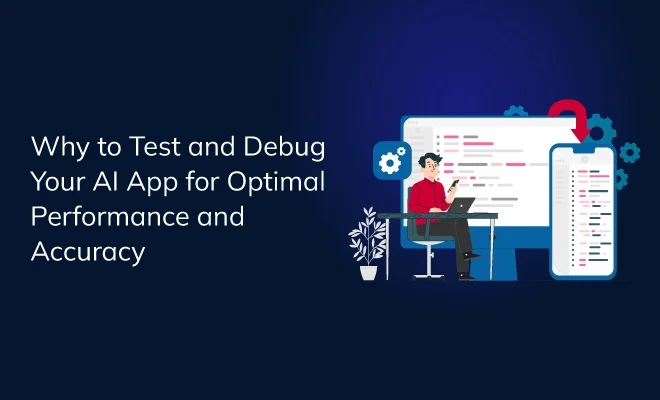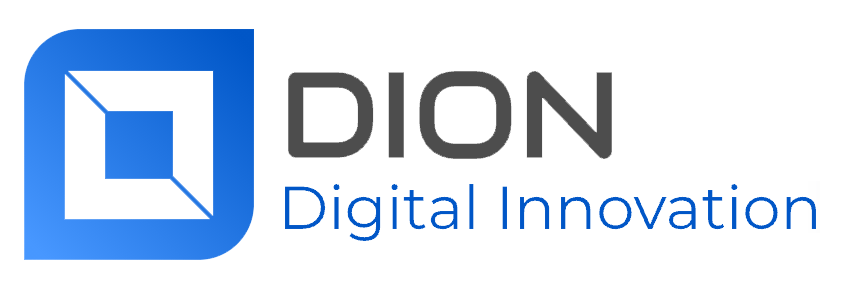Why to Test and Debug Your AI App for Optimal Performance and Accuracy
Artificial intelligence (AI), the new-age technology, has emerged as a game-changer across industries. From healthcare and finance to entertainment and customer service, the potential of AI is undeniable. AI-driven applications encompassing predictive analytics, natural language processing (NLP), and computer vision are transforming the course of business operations.
While the promise of AI is exciting, deploying an AI app without proper testing and debugging can be destructive. Since ensuring optimal performance and accuracy in an AI app is necessary, the role of testing and debugging becomes important.
Importance of Testing and Debugging in AI App Development
An app may look impressive on the surface, but without thorough testing, latent bugs and performance bottlenecks could undermine its functionality. Therefore, testing and debugging are keys to delivering a reliable AI app.
Deploying a faulty AI app can have far-reaching consequences. From user frustration and negative brand reputation to financial losses and legal troubles, the issues of inadequate testing can be severe.
1. AI App Testing and Debugging for Optimal Performance
Performance-related problems can diminish the quality of user experience, causing delays in response, crashes, and irresponsive interfaces. Users require applications that are both functional and exhibit speed and dependability. Effective testing helps identify performance bottlenecks. Debugging, on the other hand, ensures rectification of the errors so that an AI app operates seamlessly, meeting user expectations and delivering the desired outcomes.
2. Testing and Debugging for AI App’s Accuracy
The reliability of an AI app is directly related to the quality of the data utilized for its training. Testing confirms that the app matches the expected outcomes and works in real-world situations as planned. Inaccurate models can lead to faulty predictions and misleading outcomes. This reduces the app’s ability to perform critical tasks.
Testing and Debugging Techniques for AI App Development
As AI applications become more complex, specialized testing strategies are essential to guarantee their functionality. Testing and debugging play a key role in ensuring robustness, accuracy, and optimal performance of an AI application.
Testing Techniques in AI App Development
Testing techniques in app development are tailored to the unique challenges posed by AI algorithms. These techniques ensure that AI-driven applications function accurately and efficiently.
Here are some essential testing techniques for AI app development:
Unit Testing
Focused on individual components, unit testing validates the correctness of specific functions, modules, and algorithms. This technique ensures that each component operates as expected, contributing to the app’s overall functionality.
Integration Testing
This technique evaluates the interaction between different modules, ensuring they work cohesively. It confirms that data flows seamlessly between various components, and the AI app produces accurate outcomes.
End-to-End Testing
End-to-end testing simulates real-world user scenarios, verifying the complete functionality of the AI app. It tests the entire workflow, from data input to AI model processing and output, ensuring a smooth user experience.
Performance Testing
As AI apps deal with high data volumes, performance testing assesses the app’s responsiveness and scalability under varying loads. This ensures the app can handle high data usage without compromising speed or accuracy.
Data Quality Testing
Given the importance of accurate data for AI model training, this strategy validates the quality and integrity of AI training data. It identifies inconsistencies and biases that could impact the app’s prediction ability.
Debugging Techniques in AI App Development
Debugging in AI app development requires specialized techniques due to the complex nature of AI algorithms. Unlike traditional software, where issues might be straightforward to identify, AI systems operate within intricate patterns of data.
Here are several effective debugging techniques tailored to the challenges of AI app development:
Visualizing Model Outputs
Visualize the outputs of your AI models, such as predictions, classifications, or segmentations. Plotting these outputs against ground truth can highlight patterns of errors and guide debugging efforts.
Interpretable AI Models
Use interpretable AI models, such as decision trees or linear regression, as baselines for debugging. These models are easier to interpret, and discrepancies with more complex models can help pinpoint issues.
Activation Visualization
This technique focuses on visualizing the activations of individual neurons or layers in the network architecture of the AI app or ML model. It helps in understanding how the network processes and transforms input data.
Gradient Analysis
Analyze gradients during backpropagation to detect vanishing or exploding gradients. These issues can lead to slow or unstable training.
Grad-CAM (Gradient-weighted Class Activation Mapping)
Use Grad-CAM to highlight the areas of an image that influence model predictions. This can help identify if the model is focusing on relevant parts of the input.
Data Inspection and Augmentation
Debug issues related to input data by inspecting and augmenting it. Data augmentation techniques can expose problems that arise with specific data instances.
Validation and Test Sets
Create separate validation and test sets to evaluate the model’s performance on unseen data. This helps identify overfitting or generalization issues.
Error Analysis
Analyze the types of errors the model makes. Are there consistent patterns or common misclassifications? Understanding these errors can guide improvements.
Cross-Validation
Implement cross-validation to assess the model’s stability across different data folds. Inconsistent performance across folds might indicate issues.
Runtime Profiling
Profile the app’s runtime behavior to identify performance bottlenecks or memory issues. Tools like memory profilers can help pinpoint resource-intensive operations.
Checkpoints and Logging
Save model checkpoints during training to revert to previous states if new changes introduce issues. Detailed logging captures information about model behavior and inputs for post-mortem analysis.
Code Review and Collaboration
Engage in collaborative debugging. Peer reviews and discussions with colleagues can provide fresh perspectives and insights into debugging challenges.
Simulation and Synthetic Data
Debug using simulated scenarios and synthetic data. Controlled environments can expose edge cases and stress-test the app’s responses.
Effective testing and debugging in AI app development requires a deep understanding of the underlying algorithms, as well as domain-specific knowledge. A combination of data analysis and systematic testing can help identify issues in an AI app. Debugging, on the other hand, can help with the refinement of AI models for optimal performance and accuracy.
Final Thought
The journey from idea to app is a continuous process, involving constant refinement, assessment, and improvement. As AI applications continue to reshape industries and redefine user experiences, the importance of testing and debugging need not to be overexplained.
Digital Innovation, as a full-fledged AI development company, has expertise in AI app testing and debugging. Your partnership with us can lay the foundation for AI apps that perform optimally and deliver accurate results.
Author


